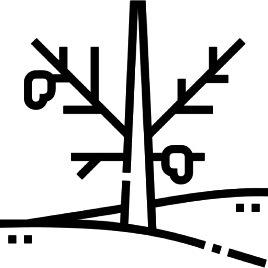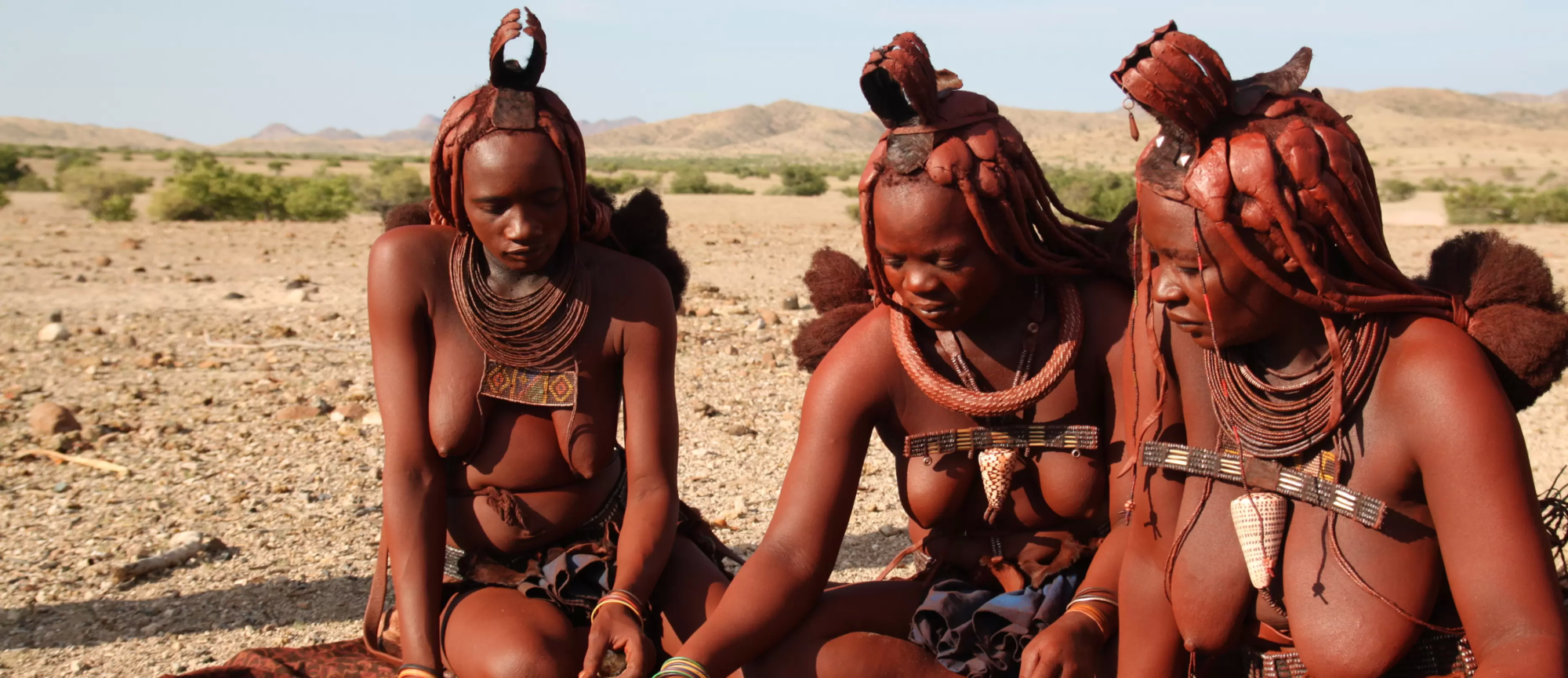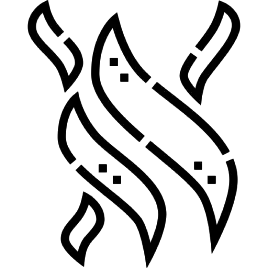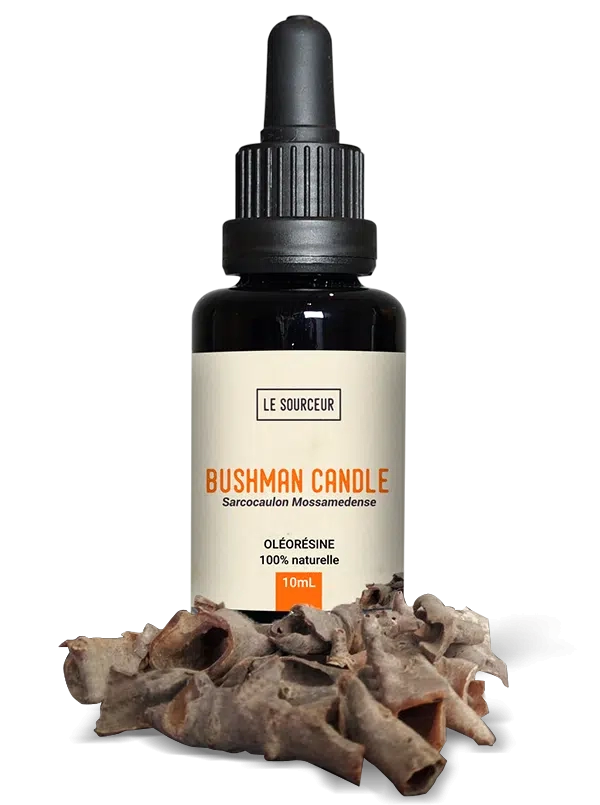Livraison offerte dès 79€ d'achat !
Nouveautés : Les Infusions, les Ultrasons et les Upcycling !
Livraison offerte dès 79€ d'achat !
Nouveautés : Les Infusions, les Ultrasons et les Upcycling !
Bushman Candle is the story of a raw material used for thousands of years by the tribes of Southern Africa.
But it’s also the more recent story of a discovery for the world of perfumery, made a little by chance and by us, on the road that was to lead us to Myrrh.
It comes from small shrubs of the Sarcocaulon Mossamedense type, which thrive in the arid Kaokoland region of north-western Namibia.

Bushman Candle is in fact the result of a long process of transformation of a dead part of the Sarcocaulon plant.
The plant’s soft twigs slowly decompose, leaving behind a sweet, amber-scented glowing wax in the form of a hollow bark or shell.
This solidifies in the sunlight and then falls to the foot of the shrub.
It can then withstand the extreme heat of the region, while retaining its exceptional fragrance and properties for years.
It is precisely this solidified wax that we call Bushman Candle.
The shrub doesn’t spread very high, but it is extremely dense.
It tends to grow wide.
Its branches are thick, somewhat puffy and filled with thorns to protect it from curious animals.
Although impressive and unsightly, it creates very pretty flowers that can be seen during the mild seasons.
They range from pale pink to orange-yellow and are never very numerous.
It is generally found in the middle of the Namibian desert, on rocky, acidic soil.
One wonders how a plant can come to life in this particularly inhospitable environment.
It can also be found on the Namibian coast.

To date, Bushman Candle has not been cultivated in any way, and yields are limited to what nature provides.
Harvesting is therefore carried out in the wild, almost exclusively by the women of the Himba tribe.
Moreover, the resinous bushes are far apart, making the mission both time-consuming and complicated, especially on the hottest days.
It also requires a thorough knowledge of the terrain.
Yields are therefore very low, limited to a few kilos per season.
Each Sarcocaulon Mossamedense is stripped of the glowing wax oozing from its dead branches by simply breaking it.
This also makes it easier to transport.
Pieces at the base of the shrub are also collected.
The Bushman Candle breaks like porcelain.
It makes the sound of shells clattering together once inside the plastic bags used by Himbas women to store the material.
They carry them on their backs or slung over their shoulders.
Last but not least, this harvest is punctuated by the songs that echo through the kaokoland and its endless arid expanses.

The Bushman Candle takes its name from the original inhabitants of Southern Africa, the San or Bushmen, who once used the material as a natural torch to light their way through the night.
A technique tried and tested by the Himbas, who perpetuate this magnificent tradition.
It’s worth pointing out that the resin only reveals its secrets when it’s heated: a magnificent fragrance both sweet and round, vanilla and benzoin.
To see this torch with your own eyes, illuminating while scenting, is a unique experience.
It’s worth noting that the olfactory torch helps to repel the many parasites and pests in the community’s living space.
The Bushman Candle is also used in traditional Himba cooking.
Firstly, it keeps the fire going, simply by throwing a few pieces into the middle of the hearth.
It is also used to smoke and season meat (usually oryx).
Recently discovered and still largely unknown to the general public, bushman candle doesn’t exist on a daily basis outside Himbas micro-communities.
Nevertheless, it has recently joined the olfactory palette of our Chief Sourcer, who offers it to perfumers in oleoresin form to guide them along new olfactory paths.
It is particularly effective as a fixative.
Finally, its vanilla notes can be used as a cold diffusion for a gourmet coocking ambience at home.

The story of the Bushman Candle is symptomatic of our trade as sourceors.
Originally, our first Namibian trip was to take us on the trail of Omumbiri Myrrh in the Kaokoland desert, in the north-west of the country.
More precisely, right in the heart of the Himba tribe.
Newly settled in, a young Himba woman named Nakalandjara offered to guide us through the vastness of the territory.
We set off at dawn the next day.
She soon stopped at the foot of a small thorny shrub to collect what looked like charred bark.
She told us it was actually a glowing wax called Bushman Candle.
We’d heard of it before, but never expected to find it here.
We were like children.
We started smelling the gum, which has almost no odor.
But if our profession has taught us one thing, it’s that fragrances are fickle.
You never find them where you expect.
We remember a dig in Nicaragua where we smelled a strange flower: in the morning it smelled nothing, but in the evening it was fragrant.
You just had to have the patience to come back and see it.
We realized that the Bushman Candle would not be so easily won over.
Back at camp, we burned a small piece.
An explosion of flavour!
The material took on a whole new meaning, it was fabulous.

The chief of the Himba tribe explained that it was used by the first indigenous peoples of Central Africa, the Bushmen, sometimes as a torch, sometimes to flavour Onyx meat, sometimes to keep mosquitoes away.
The tribe carried on the tradition, and we felt it was our mission to share their story.
These people knew more about local materials and smells than anyone else in the world.
It was a dream come true.
Since then, our discovery has been used in the creation of some very famous perfumes.
It’s often used as a fixative, and its aroma of vanilla, benzoin, incense and balsam is a real asset in creation.

“Sur la Piste des senteurs” Episode 1: Namibia, the myrrh of the Himbas Production:
Flair Production, TV5 Monde, Ushuaïa TV Director: Daniel Serre
Journal d’un anosmique, “Namibie” by Stéphane Piquart & Albin de La Simone
Ke-Nako (It’s time), comic published by Expression Cosmétique, Drawing by Jef, Story by Stéphane Piquart


 informations
informations  mon compte
mon compte  contact
contact Copyright © 2024 Le Sourceur. Tous droits réservés / Développement : Mrlsagency